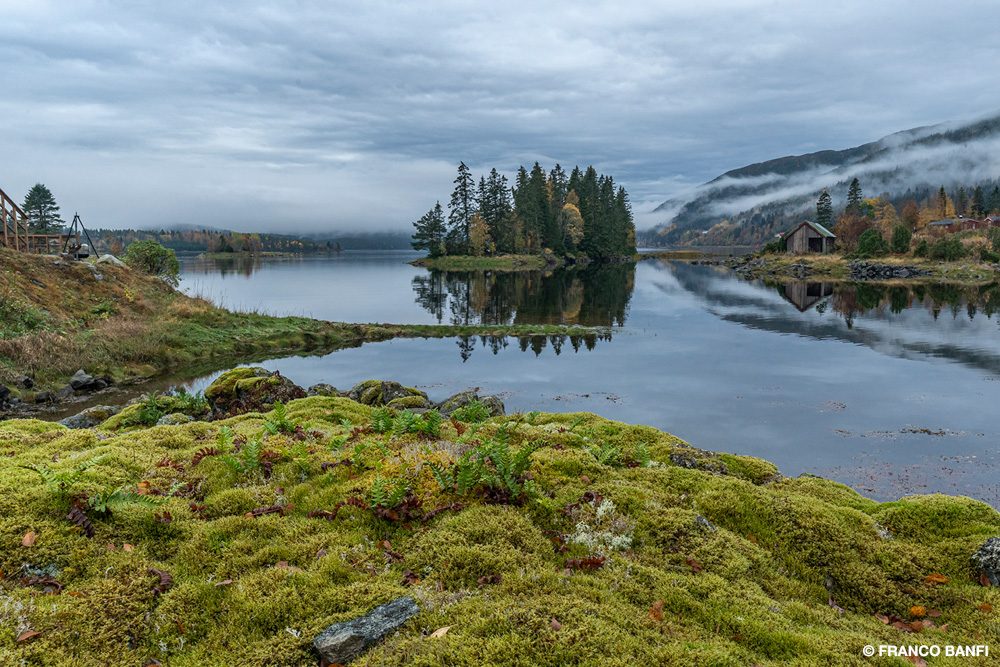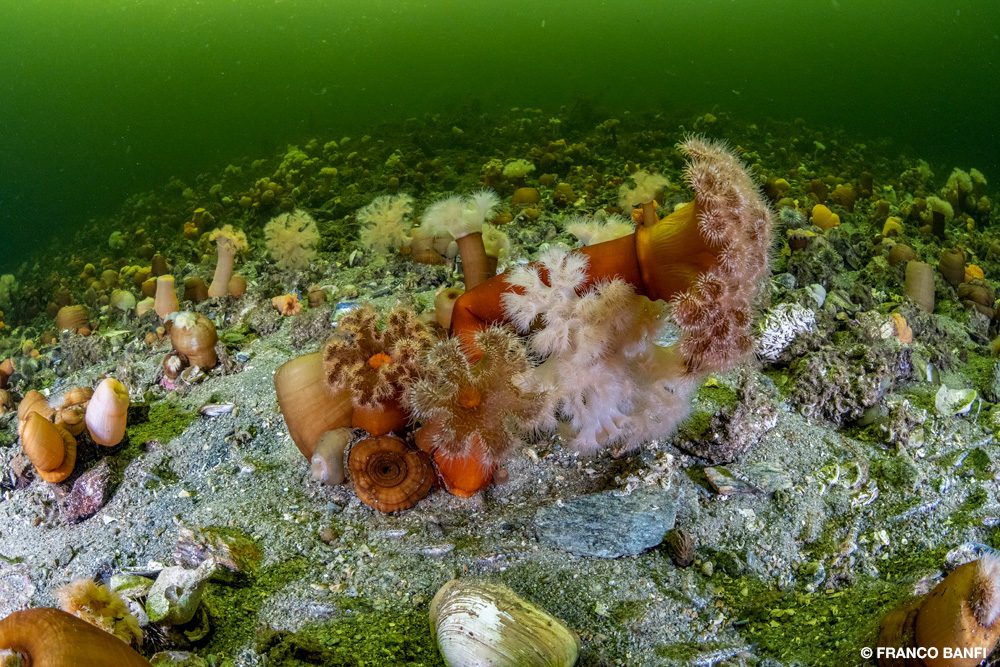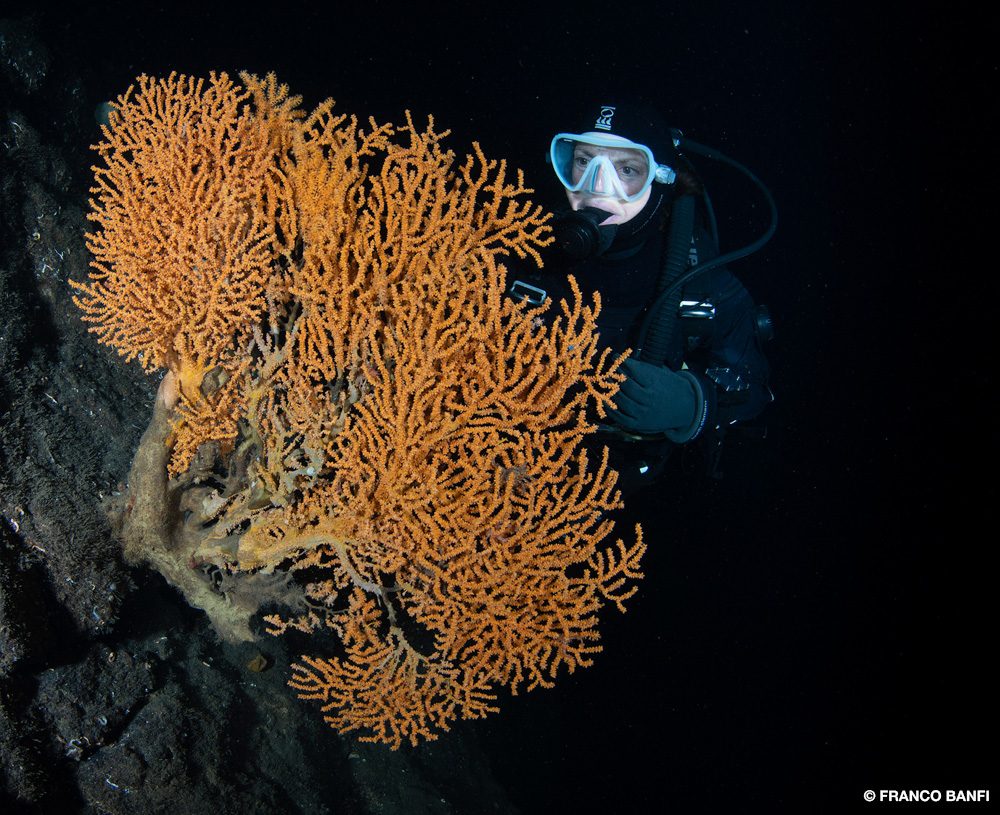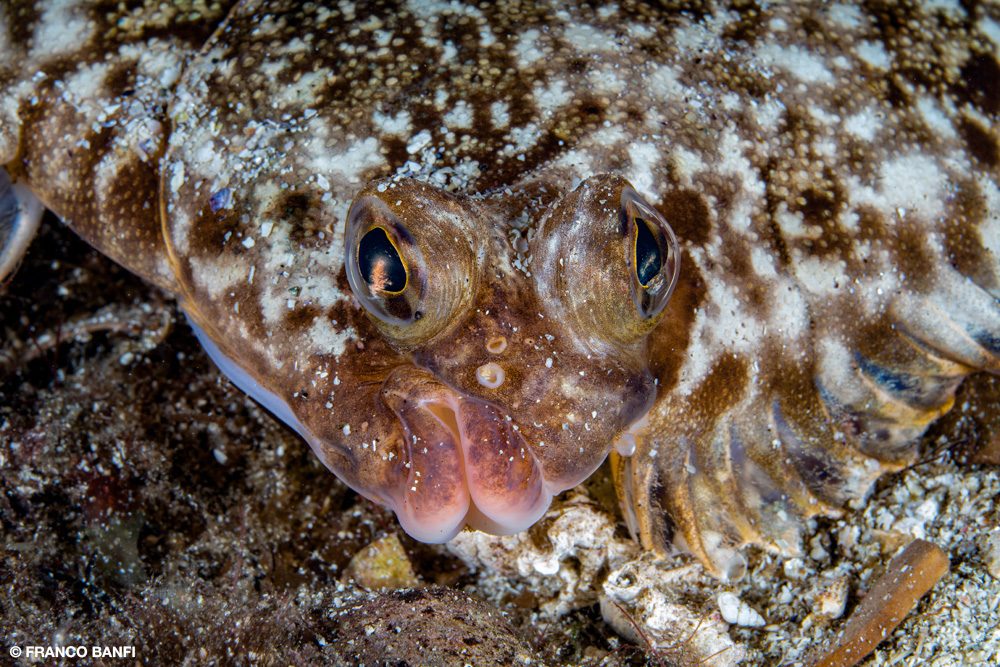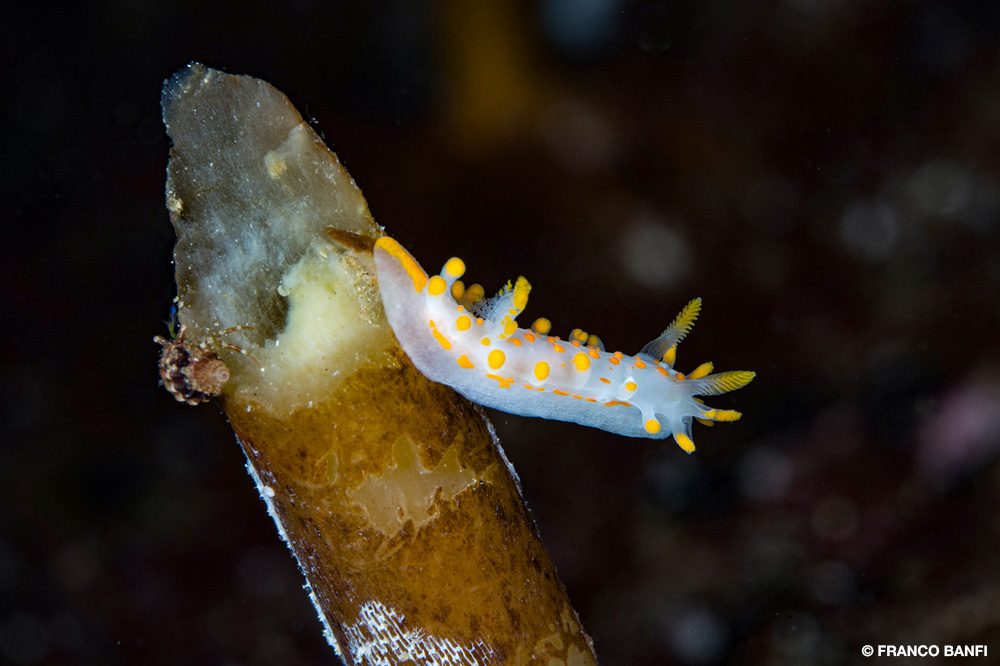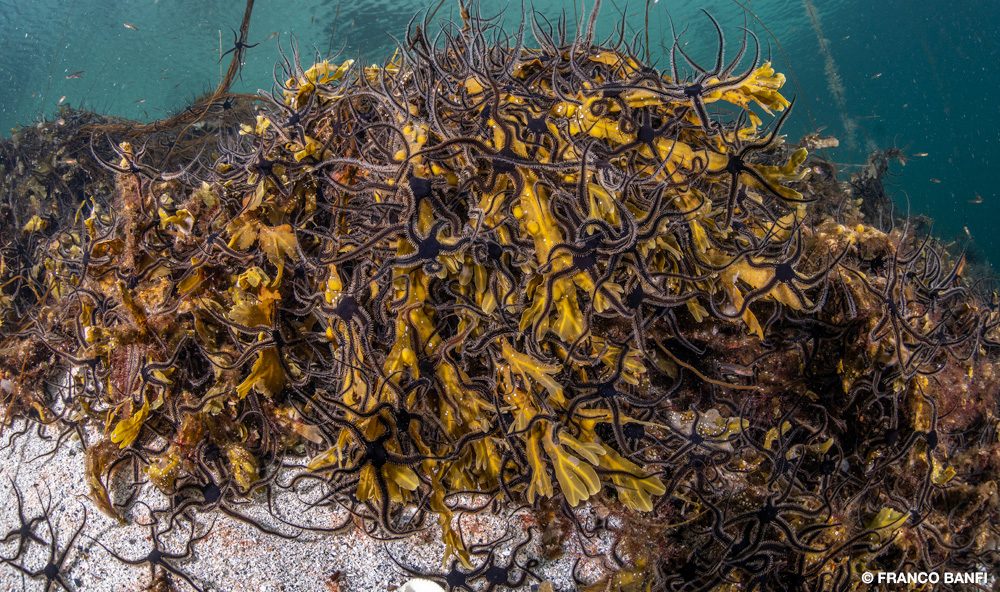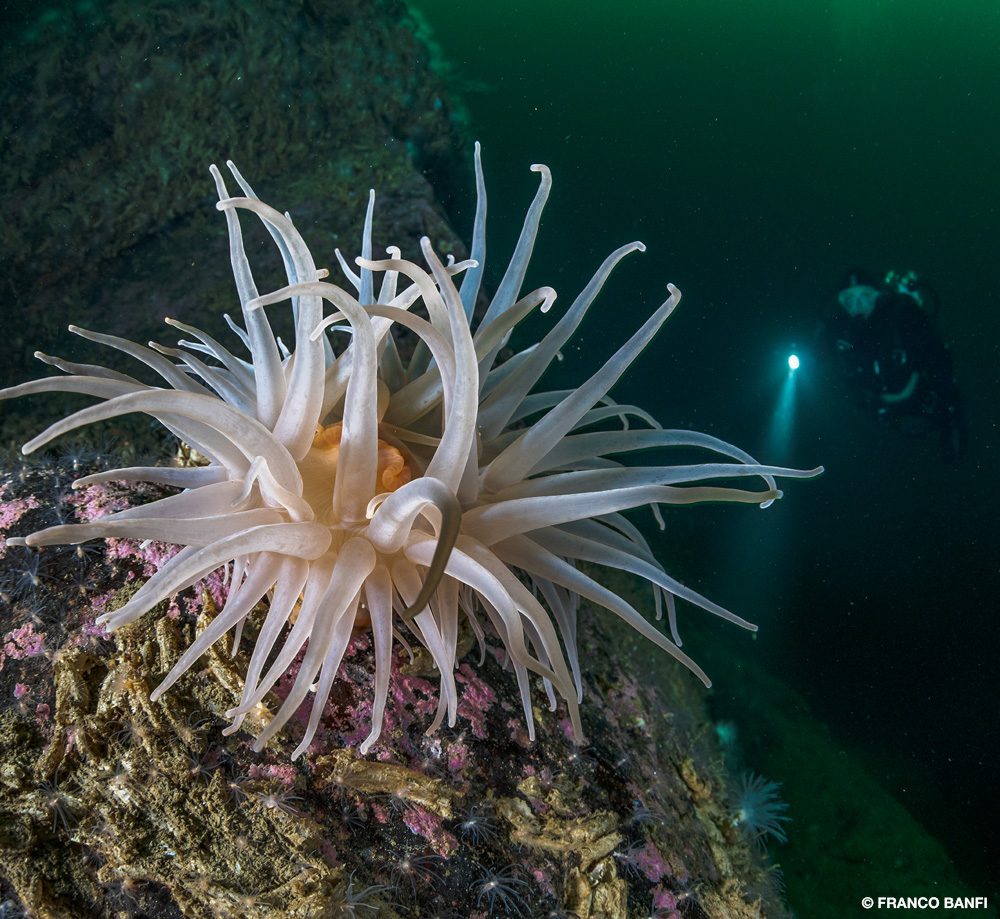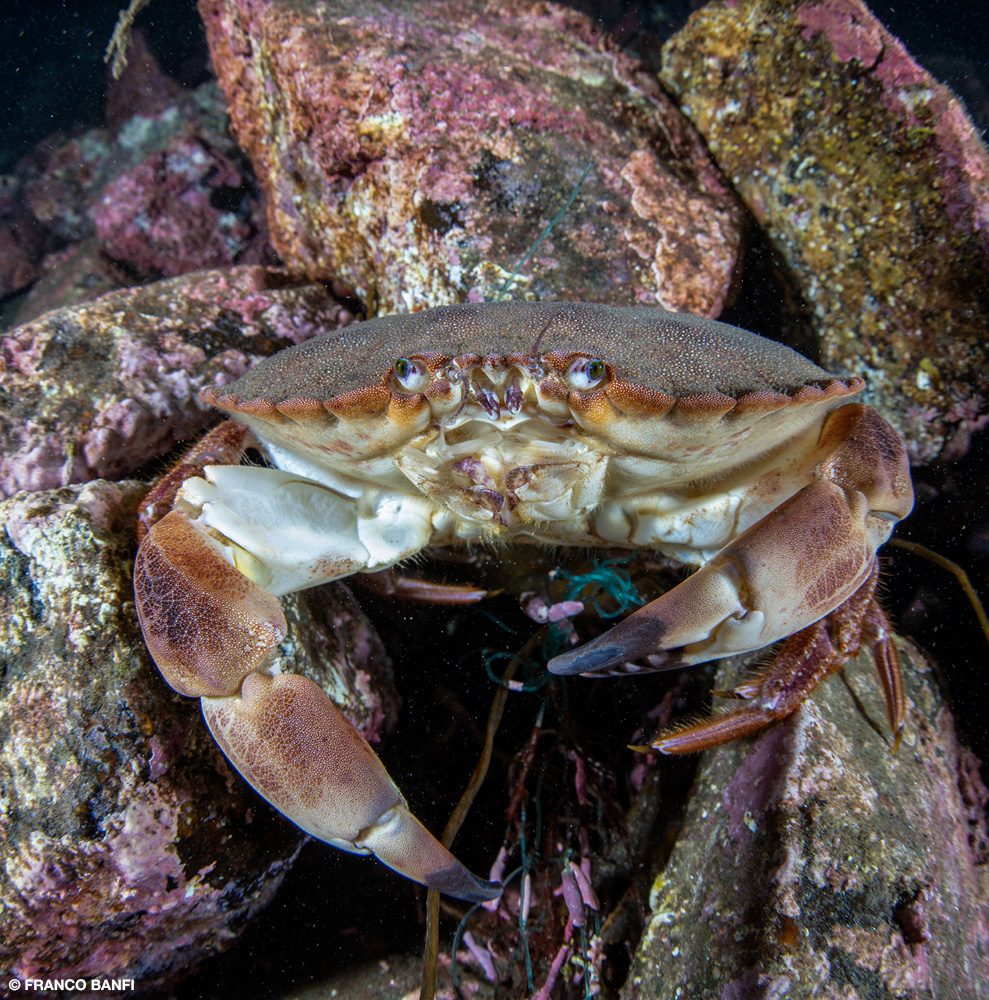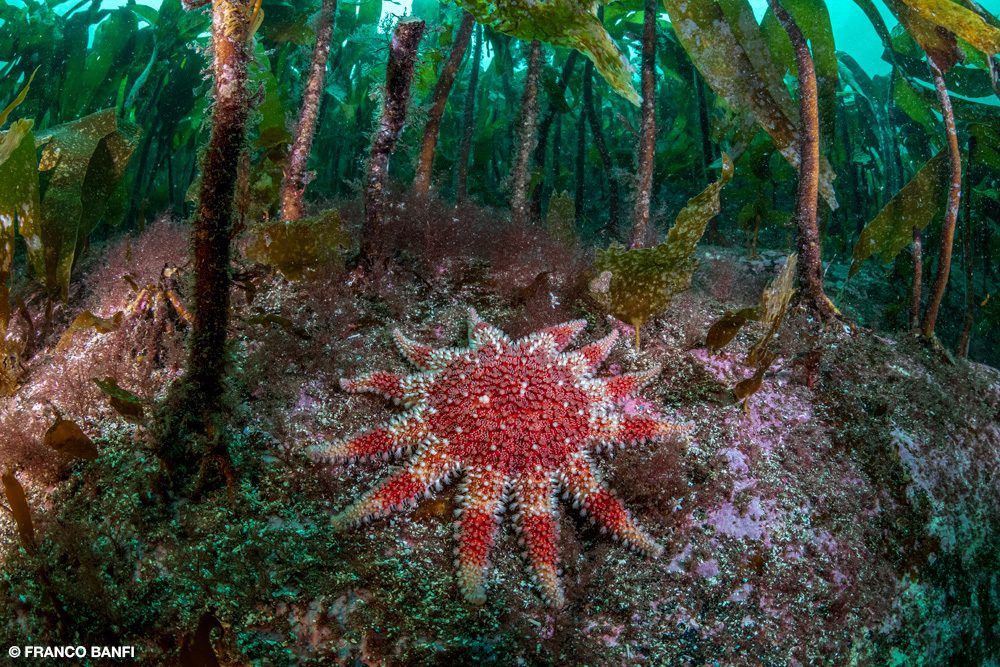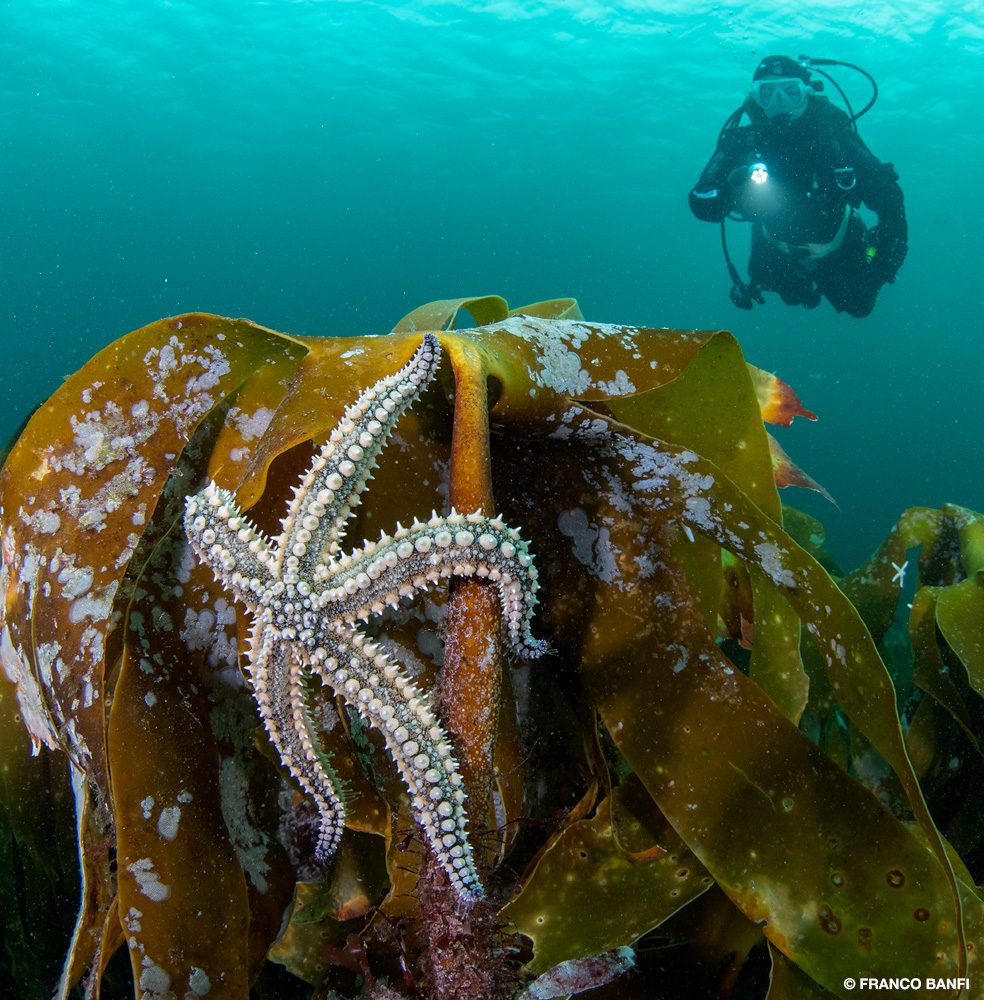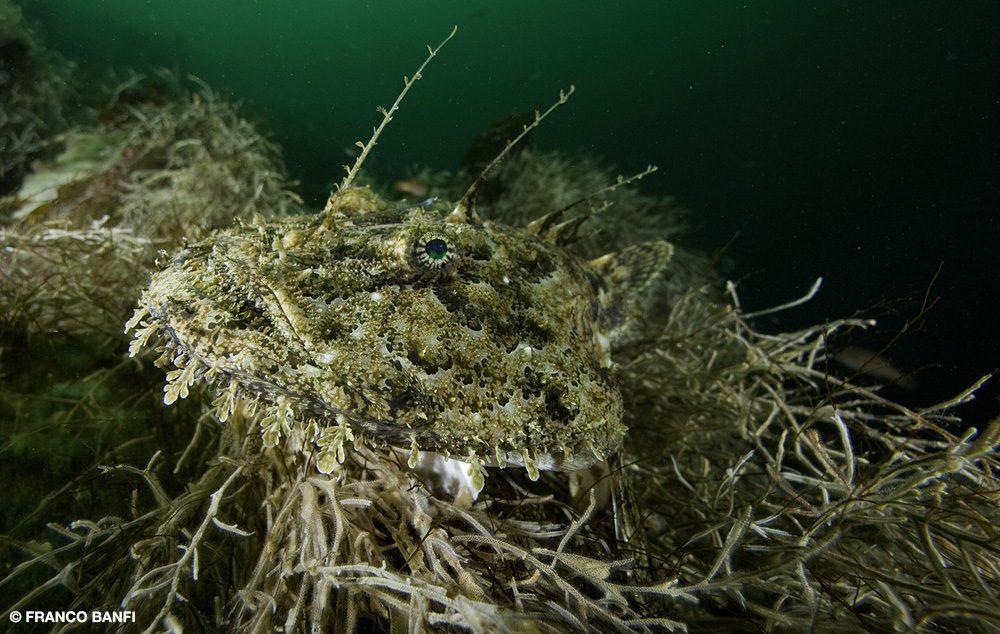Discovering Secret Wildlife
TRAVELING THROUGH THE FJORDS and on the rivers has always been an important part of life in Norway and Scandinavia. Witnessing the beauty of sunsets from front-row seats on the fjords or chasing the northern lights as they dance on dark autumn and winter nights are experiences not to be missed. Discovering what is hidden below the dark surface in the unfathomable underwater realms here is just as fascinating for visitors who choose to dive in Norway.
We arrived at Trondheim Airport, where tour operators Anja and Sven picked us up for a drive to Utvorda for camping. It’s the ideal departure location for discovering unconventional ecosystems in cold water. The Namsfjorden and the Norwegian Sea coastline are Pandora’s boxes full of uncommon creatures.
The following morning we prepared for the first boat dive and carried our equipment the short distance to the pier, where the boat was moored. Timing is crucial for diving in Norway since tidal streams wait for nobody. Professional and experienced dive operators are also a must. We left the pier on a dark surface rippled only by the waves off the side of the boat. No other boats were in sight — nobody to share the dive with but our team.
Rare wildlife thrives deep in the bountiful waters of the Norwegian fjords.
It was a pleasant, temperate October morning, and the ride did not last long. We soon arrived at the dive site and hurried to take advantage of the slack-water window. After all our checks at the surface, we descended through the first few murky meters before reaching the dark but clearer water at about 100 feet (30 meters).
We dived along a landslide of rocks partly sunken in the debris-filled bottom. This location wouldn’t be inspiring if you were looking for colorful benthic critters, but for us it was the first of an amazing series of discoveries of a few of the precious animals we were eager to observe and photograph.
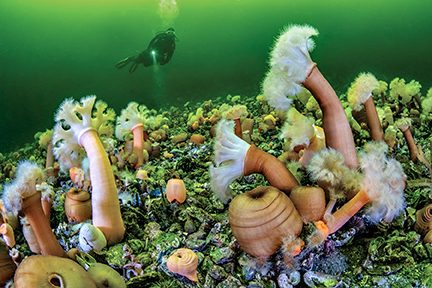

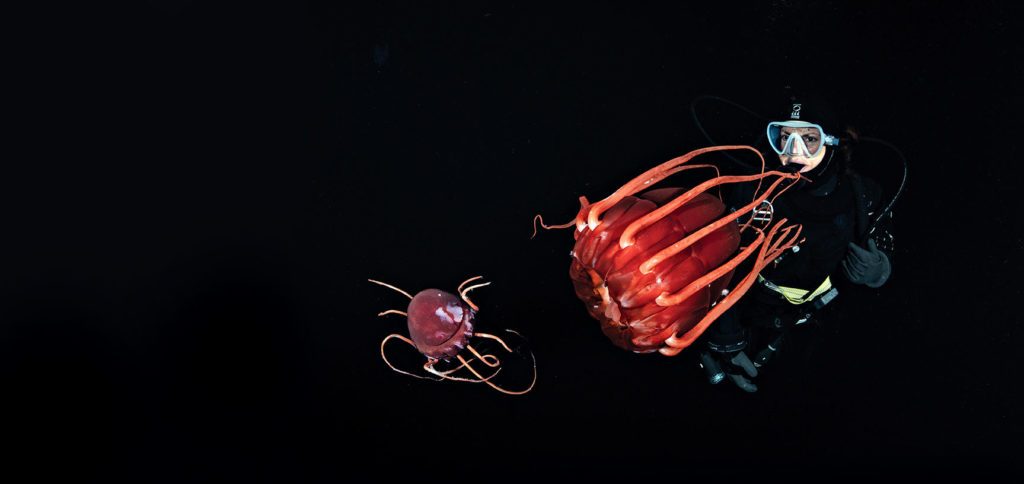
An undistinguishable shape reflected our lights, peeping in and out of view in the dark water and among the rocks. Leveraging our patience, determination, and curiosity, we followed the brief appearances until we gained the confidence of a shy and beautiful velvet belly lanternshark — a small, deepwater dogfish shark. Our happiness skyrocketed at witnessing such a rare animal on our first dive.
The velvet belly is bioluminescent, and its photophores are difficult to photograph well. We turned off our lights and took turns observing this wonderful specimen, and everybody enjoyed a few minutes with the lanternshark before it was time to surface.
Along a silty, rocky bottom we passed over brittle stars, sea urchins,
colorful coldwater anemones, and various invertebrates…
In the afternoon we set up for the day’s second dive and headed to the Namsfjorden, a long fjord where seawater meets the Namsen River’s fresh water. We turned our attention to the mouth of the fjord, where it reaches the open Norwegian Sea, and dived in the twilight along a rocky coast dotted with lush kelp gardens in the shallows and plenty of echinoderms and crustaceans.
After a couple of days diving various Namsfjorden sites, we moved our base and the staff to a charming cottage on the banks of Trondheimsfjorden with a pier to dock the boat and a platform at the right tide for entering the water. Trondheimsfjorden is Norway’s third-longest fjord, at more than 80 miles (129 kilometers) long and a maximum depth of 2,024 feet (617 meters).



With six major river systems flowing into it, Trondheimsfjorden has the largest biological production among Norway’s fjords. The freshwater discharges give rise to the estuarine circulation and creates stratification between fresh water and the denser seawater. Sediments entering the fjord block the dim light penetrating the basin’s surface, resulting in even darker shallow environments and adding to the halocline effect.
These dark shallows at Trondheimsfjorden contain ecosystems and animals that are usually at depths we could not reach. At the world’s shallowest coldwater coral reef, we could see Lophelia pertusa stony coral at only 130 feet (40 meters). Pale ghost sharks (Chimaera monstrosa) and the triangular, soccer-ball-sized helmet jellyfish (Periphylla periphylla) are among the other deep-sea denizens found here.
We spent the afternoon preparing our gear for one dusk dive and one night dive as we patiently waited for the darker hours. Our strategy worked perfectly. During the dusk dive we focused on the mesopelagic helmet jellyfish. We arrived on the site after a short Zodiac ride and tried to glide into the water as gently as possible, which was not easy in our drysuits and with the appropriate weights.
Along a silty, rocky bottom we passed over brittle stars, sea urchins, colorful coldwater anemones, and various invertebrates before reaching a depth of about 100 feet (30 meters) in dark water full of suspended particles. Helmet jellyfish were there in numbers, feeding on copepods and making it hard to avoid backscatter and take decent pictures. Beautiful and luminescent, gleaming red in our dive lights like oversized cherries, helmet jellyfish are unloved and mostly considered a nuisance. But they are unbelievably beautiful as they drift languidly from the depths to the dark surface, with their 12 long tentacles trailing as they pump water in their huge gelatinous umbrellas. They follow their vertical migration at dusk toward the surface (and food) with a return to deep water before dawn.


The after-dinner night dive had a surprise for us. Although we hoped to see a pale ghost shark, we did not expect it to happen. While exploring cracks and fissures at about 115 feet (35 meters), two eyes reflected our light and caught our attention. We hovered patiently just above the sandy bottom and spotted those eyes several times in the dark. They got intermittently bigger until a ghost shark came within sight a few times, with slow movements, peeping in and out but ultimately not trusting us before returning to the dark.
Just spotting one was thrilling, but then a second one appeared. It was a beautiful adult that seemed more at ease and playful. It was looking for food on the bottom and around some rocks and did not care much about us aside from the help our lights provided in spotting its prey.
Rare wildlife thrives deep in the bountiful waters of the Norwegian fjords. It is an underwater paradise for divers experienced with drysuits and deep diving (but not technical depths). Being comfortable with night diving is also essential to get the most from your trip. If you want to see some strange creatures you won’t find anywhere else at recreational depths, you will love this destination. AD

How to Dive It
Getting there: You can fly through international hubs in Oslo, Copenhagen, or Amsterdam to the Trondheim Airport in the village of Værnes. If you travel via Oslo, leave ample time to clear customs at the Oslo airport. You’ll need to take a car from the Trondheim Airport to Namsfjorden or Trondheimsfjorden. Norway uses the standard European voltage (230 V) and plugs (types C and F), and the krone (plural kroner) is the Norwegian currency.
Currents: While operators do their best to organize safe and sheltered dives, remember that tidal currents are present, and avoid anything that would put you or other divers at risk. Each diver should travel with a delayed surface marker buoy and be skilled in deploying it since it is possible to surface far from the boat.
Conditions: Diving is best in October, when daylight is short and temperatures are still mild. Norway enjoys a temperate climate because of the moderating influence of the Gulf Stream, but you should prepare for sudden weather changes, which can also be highly variable. In October, temperatures range from about 38°F to 49°F (3°C to 9°C), and there might be rain and cold winds.
© Alert Diver — Q2 2023
EXPLORE MORE
